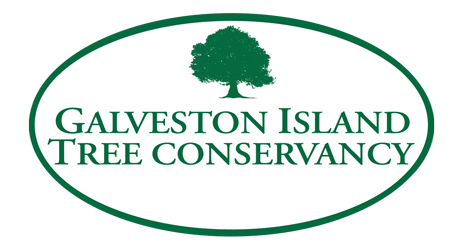Montezuma Baldcypress
Montezuma Baldcypress
In your travels around town you may have noticed some graceful small and medium-sized trees with a single trunk and bright green fern-like foliage. These are Baldcypress, an ancient genus of trees in the Cypress family Cupressaceae), now found only in Mexico and the southeastern US.
There are two surviving species and we have both on the Island. Most of us are familiar with the Baldcypress (Taxodium distichum) also known as Swamp or Southern Cypress, common from east Texas to Florida. Recent discoveries have found Baldcypress trees along a North Carolina river to be over 2500 years old!
The other species is the Montezuma Baldcypress (Taxodium mucronatum), also known as Mexican Cypress. The Tree Conservancy has added many of them along our streets as part of NeighborWoods activities. And they seem to like it here.
The Montezuma is the national tree of Mexico, native as far north as lower Texas. In its native range its striking trunk grows unusually thick toward the base when mature. The most notable example of this is a tree in Oaxaca, Mexico, which has developed a trunk diameter of 35 to 40 feet in its many centuries of life.
The Montezuma is mostly evergreen, unlike its deciduous cousin the Baldcypress. Montezuma is faster-growing and may reach up to 80 feet in ideal circumstances. Young trees are pyramid-shaped with a dense crown, maturing into a spreading and open form with a single straight trunk. The pale green, needle-like leaves are evergreen in its native range and can be so here in our mild winters. This attractive tree provides delicate, feathery foliage and dappled shade.
Adaptable to a variety of growing conditions and soils, the tree prefers sun but can tolerate part shade. Water requirements are low and it is moderately drought tolerant. The tree has high heat tolerance and adapts to challenging urban conditions for successful streetside planting.
Of special interest to home gardeners are the Montezuma’s tendency to be relatively maintenance-free, resistant to pests and diseases, and minimal in pruning requirements. The roots do not seem to interfere with sidewalks and curbs, and they are less likely to develop the “knees” of its Baldcypress relatives. Leaves, fruit and seeds are not a litter problem.
This tree also provides habitat for wildlife. It offers cover and nesting sites for birds, harbors insects for their diet, and produces seeds for small mammals.
This hardy and long-lived tree provides an attractive accent to the landscape. With success thus far on the Island as an indicator, we need to continue to add the Montezuma Baldcypress to our home landscapes where space permits. Take a visit to the 1500 block of Sealy to see a beauty planted during the earliest Neighborwoods planting in 2010. There are several in the 4500 blocks of Avenues N½ and O that were added in 2015. These were planted as very small trees so you can see their impressive growth rate. You just might need one if you have a spot for it.
“Tree Stories” is an ongoing series of articles about Island trees, tree care, and tree issues. If you have or know of a special tree on Galveston Island that should be highlighted, please email treesforgalveston@gmail.com. Margaret Canavan is a Galveston resident, a Galveston County Master Gardener, and a member of the Galveston Island Tree Conservancy Board.
Hurricane Ike caused the loss of 40,000 trees on Galveston Island. The Galveston Island Tree Conservancy was formed to address that loss and has replaced nearly 19,000 through grant-funded plantings and giveaways.

